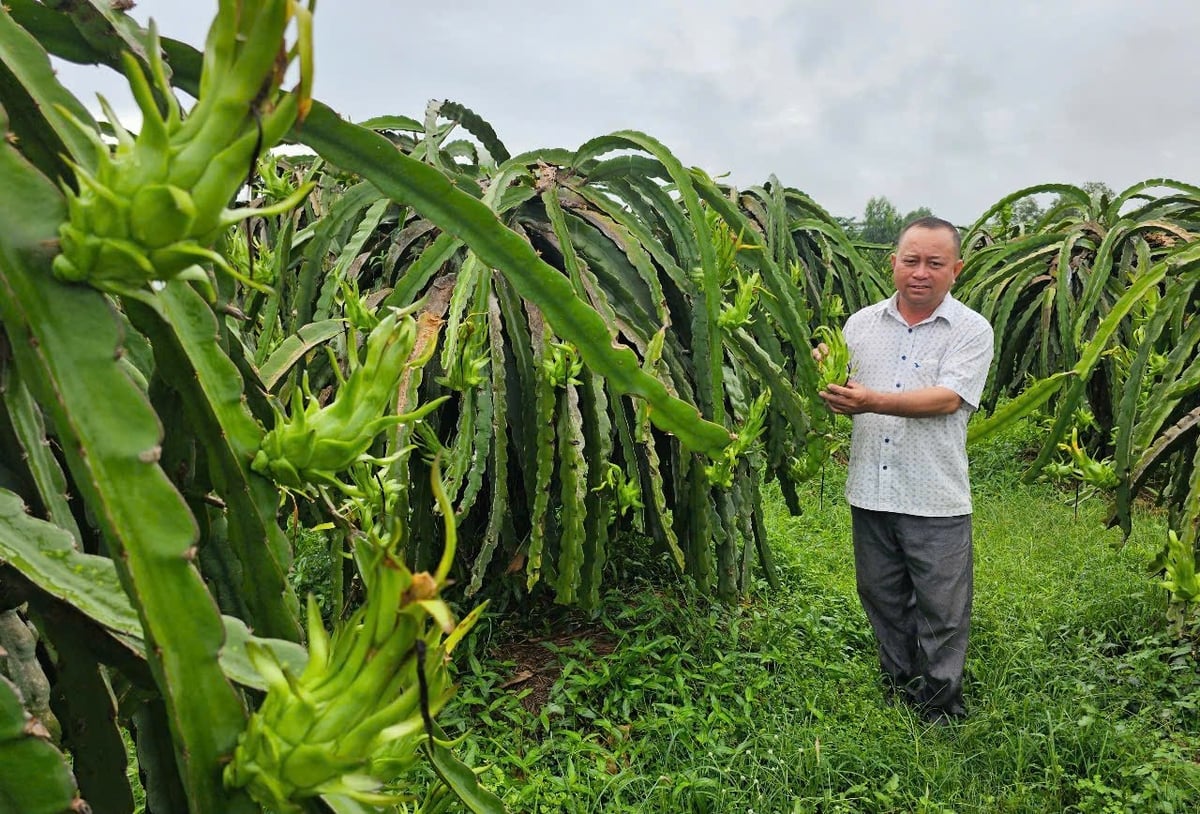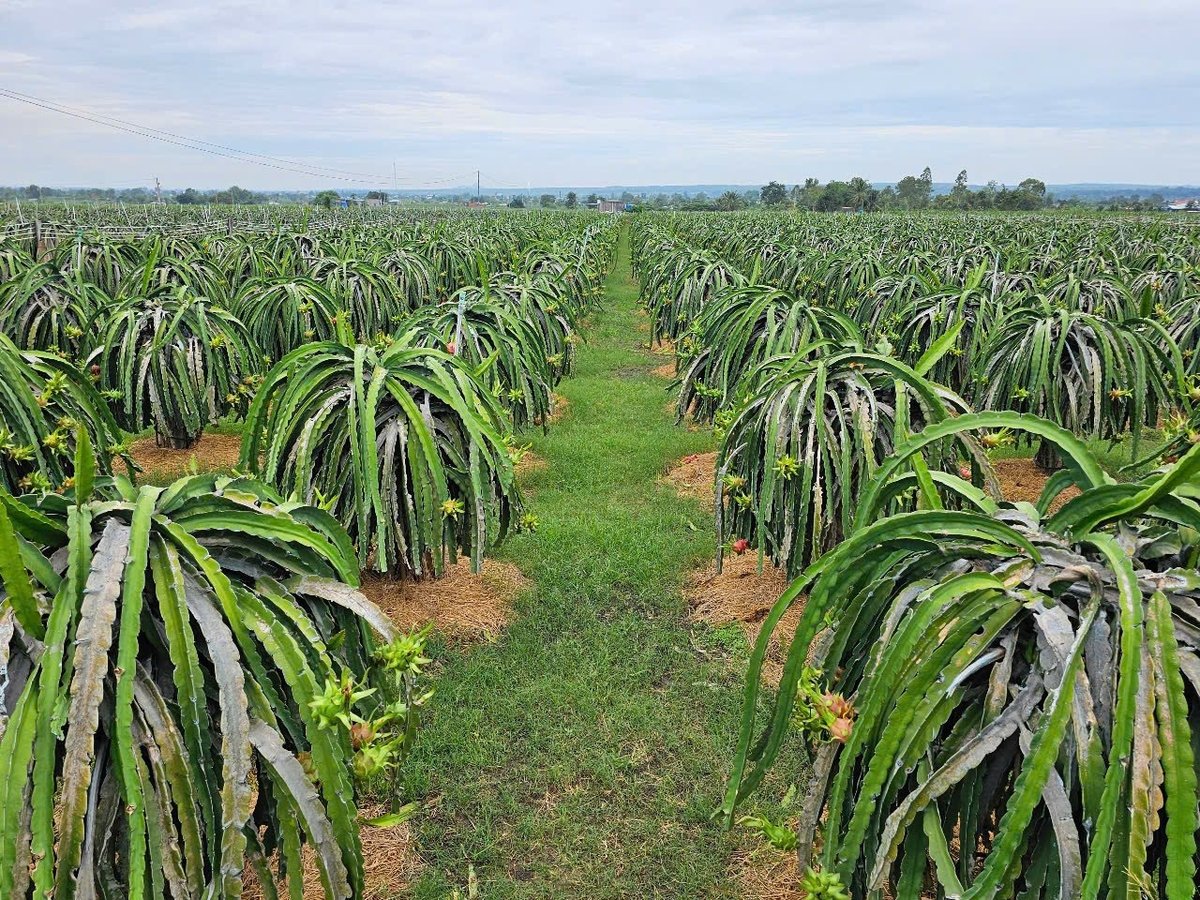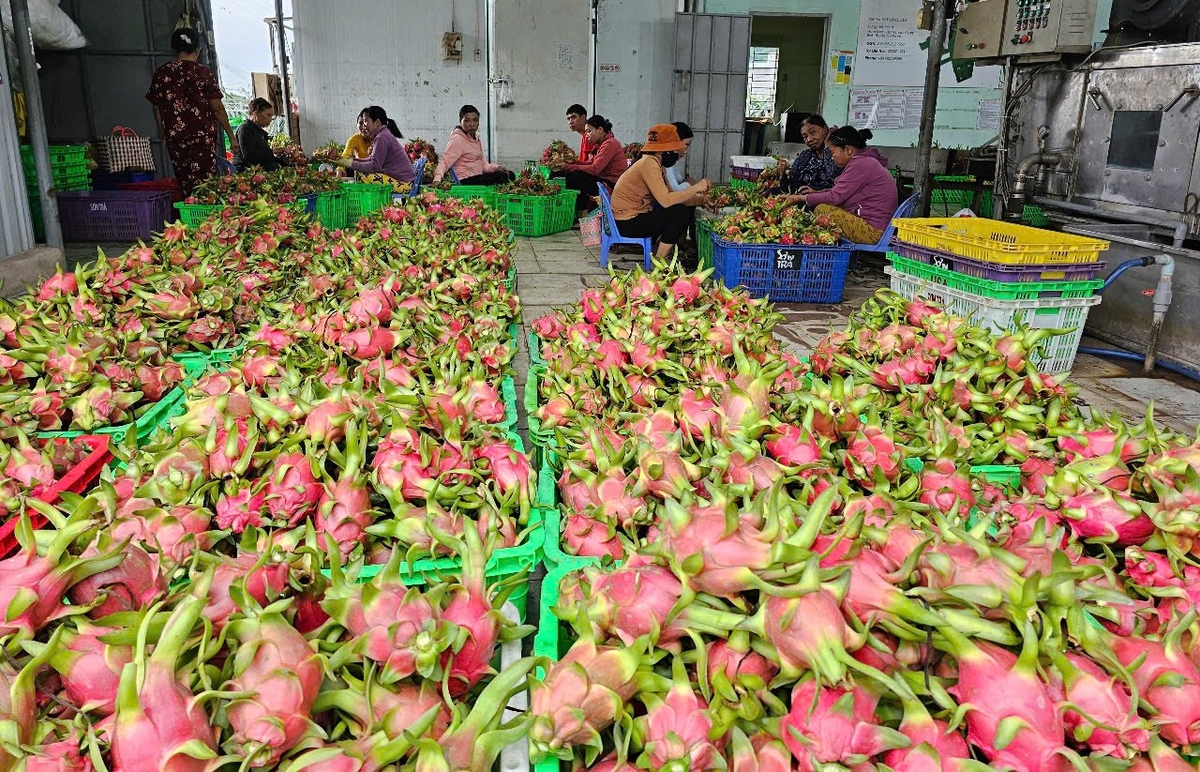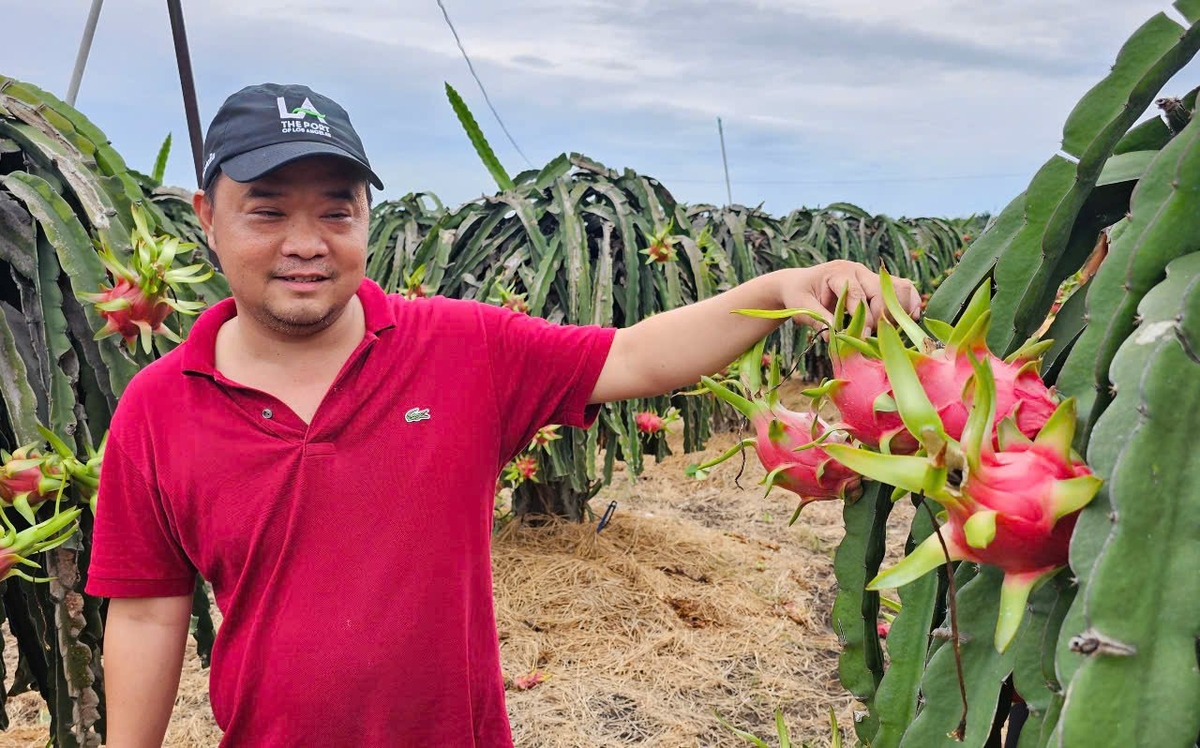December 30, 2025 | 23:32 GMT +7
December 30, 2025 | 23:32 GMT +7
Hotline: 0913.378.918
December 30, 2025 | 23:32 GMT +7
Hotline: 0913.378.918
While many growers still struggle with the cycle of bumper crop, plummeting prices - at times even resorting to destroying their orchards due to market crashes, a number of farmers in Lam Dong have chosen a different path and achieved remarkable success in penetrating high-end export markets.
Their secret lies in their steadfast commitment to improving product quality by adhering to GlobalGAP standards for dragon fruit production. Mr. Nguyen Van Thanh, a farmer in Ham Thuan commune, is a typical example. He endured numerous challenges before discovering the formula for GlobalGAP-compliant dragon fruit farming.

Mr. Thanh shared that he has been persistently producing GlobalGAP-certified dragon fruit. Photo: Kim So.
He shared that his first two GlobalGAP production cycles failed to meet export standards. However, thanks to perseverance, willingness to learn, and especially the knowledge gained through a project supported by the United Nations Development Programme (UNDP) and Ministry of Agriculture and Environment, he eventually developed an effective production process.
By his third crop in 2023, Mr. Thanh’s dragon fruit met the stringent requirements of markets such as the EU, the U.S., Australia, South Korea, and Japan, helping him break free from the cycle of boom-and-bust pricing.
With a 4-hectare farm, he produces an average of 150-170 tons annually. His dragon fruit is purchased under contract by exporters at a stable price of VND 21,000-27,000 per kg. After deducting all expenses, he earns a profit of VND 8,000-10,000 per kg.

Mr. Thang’s dragon fruit farm. Photo: Kim So.
Similarly, at the Hung Linh dragon fruit farm at the foot of Ta Cu Mountain in Ham Thuan Nam commune, Mr. Tran Quoc Thang has faithfully applied GlobalGAP standards for over 14 years.
Even during off-season downturns, when prices dropped to as low as VND 3,000–6,000 per kg, his farm still enjoyed steady demand at VND 18,000–20,000 per kg for white-fleshed dragon fruit and VND 28,000–30,000 per kg for red-fleshed varieties. These prices yield profits of 40–50%, making him largely indifferent to market fluctuations.
Mr. Thang currently manages 46 hectares of dragon fruit, including over 30 hectares of white-fleshed and the rest red and pink-fleshed varieties. With a total annual yield of 1,500–2,000 tons, he earns VND 10–12 billion per year (approx. USD 400,000–480,000) in net profit, while providing stable jobs for 130 workers with an average monthly income of VND 8 million.
The success of Mr. Thanh and Mr. Thang is no coincidence. It stems from a shift in mindset away from traditional farming practices toward scientific and technical applications, especially strict adherence to GlobalGAP protocols.
As observed on their farms, they emphasize maintaining disease-free trees and healthy dragon fruit vines. Regular monitoring for fungal diseases like brown spot and anthracnose is a critical practice. Healthy vines reduce the need for chemical spraying, cutting costs and increasing yield. “When the vines are healthy, we can light them up three times a year, achieving a yield of 40 tons per hectare, significantly higher than the traditional average of 25–30 tons,” shared Mr. Thang.

The price of GlobalGAP-certified dragon fruit has remained consistently stable and high. Photo: Kim So.
Moreover, both farmers predominantly use biological plant protection products. At Mr. Thanh’s farm, ant traps baited with shrimp paste, slaked lime mixed with rice bran to control snails, and camphor tied to trellises to repel fruit flies are common. These methods reduce pesticide use by around 50%.
They also increase organic fertilization while reducing chemical inputs. Mr. Thanh applies 12-15 kg of composted cow manure per plant per year and 1 kg of chicken manure per fruiting cycle, allowing him to cut chemical fertilizer usage by half.
This not only reduces production costs but also enriches the soil with organic matter, supports beneficial microorganisms, and ultimately results in higher-quality dragon fruit.
According to the farmers, premium markets like the EU, Japan, the U.S., South Korea, and New Zealand prefer dragon fruit with consistent size and appearance. Therefore, their farms produce according to specific market needs and maintain a steady supply to meet partner expectations.
They also stagger lighting cycles across different sections of the farm so that fruit can be harvested continuously. Despite this, current output still falls short of demand in high-end markets.

Mr. Thang tends to his dragon fruit garden. Photo: Kim So.
According to Mr. Huynh Canh, Chairman of the Binh Thuan Dragon Fruit Association, the province currently has over 26,000 hectares of dragon fruit under cultivation, yielding approximately 600,000 tons annually. However, only around 453 hectares are certified to GlobalGAP standards.
He emphasized that major export markets such as Australia, Japan, South Korea, the U.S., and the EU require GlobalGAP certification. Exports to these destinations are growing rapidly and have greater long-term potential than some traditional markets.
Therefore, expanding GlobalGAP-compliant dragon fruit production in the near future is critically important. It will not only help meet the volume and quality demands of discerning markets but also ensure stable sales at premium, sustainable prices for Vietnamese farmers.
* Currency exchange: 1 USD = 25,940 VND (source: Vietcombank)
Translated by Kieu Chi
/2025/12/29/2812-1-182339_699.jpg)
(VAN) The price of mangrove forest carbon credits is high because this forest type not only delivers significant environmental value but also plays a crucial role in addressing other issues.
/2025/12/29/5840-0-115141_514.jpg)
(VAN) From 2026, many EU markets will require shrimp to be electrically stunned before ice immersion, forcing exporters to change technologies to retain market share.
/2025/12/28/4951-2-104623_113.jpg)
(VAN) Rubber exports are forecast to remain under downward pressure in the coming period, as global rubber consumption shows signs of slowing, according to ANRPC's projections.
/2025/12/28/5120-1-093308_94.jpg)
(VAN) Many agricultural products are of sufficient quality to join global supply chains, yet fail to pass the first gateway when entering international markets due to packaging and information in English.
/2025/12/27/2453-2-172141_426.jpg)
(VAN) The sharp decline in the number of EU warnings in 2025 is regarded as a positive signal for the future orientation of Viet Nam’s agricultural exports.
/2025/12/27/1547-2-220434_536.jpg)
(VAN) For many businesses, exporting is a costly trial. But for those choosing a long-term path, small orders are a way to keep markets and learn the rules.
/2025/12/27/2522-1-090748_662.jpg)
(VAN) The 'Large-Scale Rice Field' project has been implemented in An Giang across a total area of more than 5,582 ha, comprising 73 large-scale fields and attracting the participation of 2,027 farmer households.